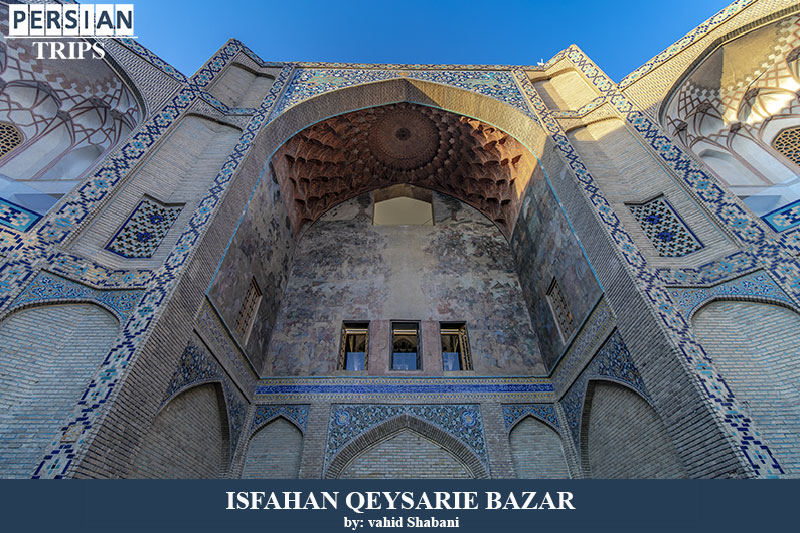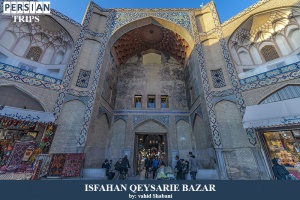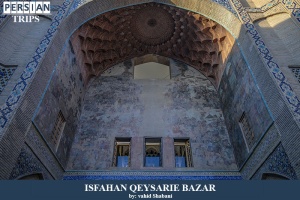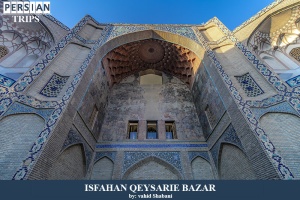Qeysarie Bazaar

Isfahan Qeysarie Bazaar is one of the most important urban spaces in Isfahan, which is located on the north side of Naqsh-e Jahan Square.
The building was built by Master Ali Akbar Isfahani during the reign of Shah Abbas I. Since the Safavid era, this Bazaar (market) has been the connecting element of Naqsh-e Jahan Square with the Old Square. Isfahan's Qaeysarie Bazaar has been important both as a means of communication and as a place to provide urban services. In addition, this bazaar is used as a place for cultural, social and religious ceremonies. This bazaar consists of several components such as Rasteh Bazaar, chahar suq (intersection), corridors, shops, Timcheh, etc.
Commercial, office and cultural spaces in this building are skillfully placed next to each other. The rows of this bazaar have high arches that correspond to the form of bazaars in hot and dry regions. The light required in bazaar is also supplied through the apertures of the arches. The entrance of Qeysarie Bazaar has a main gate, four side gates and a pond. The interior roof of Qeysarie entrance is made of colored brick tiles with Islamic designs in the form of Moqarnas, which attracts a lot of attention. The walls of the entrance are also decorated with very beautiful paintings, which unfortunately have been damaged a lot. These paintings were painted by Reza Abbasi, a famous Safavid painter; these paintings include the image of Shah Abbas in the war with Uzbeks, images of European men and women, and the image of shooting with the human head, the body of a lion and the tail of a dragon. Isfahan Qeysarie Bazaar, along with other works in Naqsh-e Jahan Square in Isfahan Province, was inscribed on the UNESCO World Heritage List in 1979.
Tags: Isfahan Province, Isfahan Attractions, Iran Historical Attractions, Bazaars in Iran, Qeysarie Bazaar


